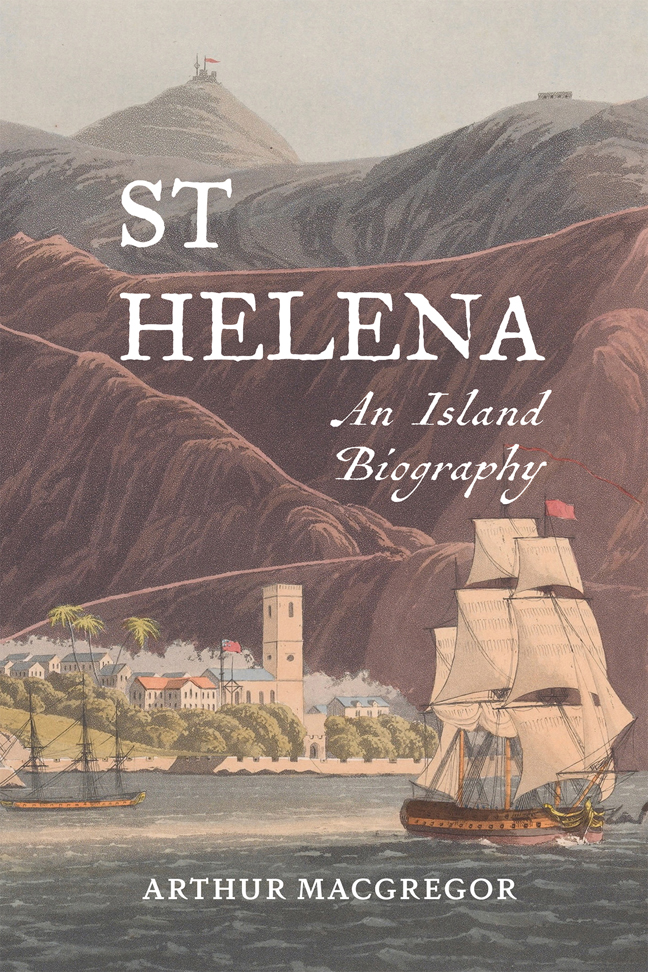Book contents
- Frontmatter
- Contents
- List of Illustrations
- Photo credits
- Preface
- Acknowledgements
- 1 Genesis
- 2 The breach: Europe and St Helena collide
- 3 Population and environment: early impacts
- 4 Population and environment: asserting control
- 5 ‘The citadel of the South Atlantic’
- 6 Scientists in transit: St Helena as a site for scientific investigation
- 7 Napoleon on St Helena
- 8 Later detainees, 1800s and 1900s
- 9 A place in the modern world
- Appendix: Governors of St Helena
- Bibliography
- Index
2 - The breach: Europe and St Helena collide
Published online by Cambridge University Press: 21 February 2024
- Frontmatter
- Contents
- List of Illustrations
- Photo credits
- Preface
- Acknowledgements
- 1 Genesis
- 2 The breach: Europe and St Helena collide
- 3 Population and environment: early impacts
- 4 Population and environment: asserting control
- 5 ‘The citadel of the South Atlantic’
- 6 Scientists in transit: St Helena as a site for scientific investigation
- 7 Napoleon on St Helena
- 8 Later detainees, 1800s and 1900s
- 9 A place in the modern world
- Appendix: Governors of St Helena
- Bibliography
- Index
Summary
Nova … had a very quick and easy passage [from Calicut] to the Cape. Some time after he turned it, he discovered a little island lying in 15 degrees south latitude, to which he gave the name St Helena. This island standing by itself in the midst of such a vast ocean, seems, as if it were to have been placed there by Providence, for the reception and shelter of weather-beaten ships in their return from the Indian Ocean.
The end of aeons of unfettered natural development on St Helena was signalled in 1502, when the Galician commander João da Nova (1460–1509), with a modest flotilla under his command, is said to have happened by chance on the island on his return voyage from India. The year is commonly acknowledged, but narrowing the date with greater precision is problematic. The island had become widely known by its present name during the 1500s before Jan Huygen van Linschoten first asserted in his Itinerario of 1596 (translated into English as a Discours of Voyages two years later) that it was so named ‘because the Portingales discovered it uppon Saint Helens day, which is the twentie one of May’. The testimony of such a venerable authority became widely accepted, not least by the island's first historian, T. H. Brooke, on whose volume of 1808 subsequent generations of writers have leaned heavily. Under the more sceptical gaze of recent scholarship, however, and with recognition of the disparity between the calendar of saints’ days that would have been observed by the Protestant Dutch merchant van Linschoten and the (necessarily pre-Reformation) feasts celebrated in Nova's day, certainty evaporates. It seems apposite that the very moment of European contact with the South Atlantic island should be clouded by dispute, for many years of contested ownership of the island paradise lay ahead, with claim and counter-claim asserted by nations lying thousands of miles to the north.
The Portuguese, Dutch, and the British
Little more than a decade after its precipitous outline first materialized before the eyes of the lookouts at the mast-heads of the homeward-bound Portuguese fleet – and doubtless after fleeting opportune visits from other vessels of the same nation – St Helena received its first long-term settler in the form of the unfortunate Fernão Lopez, once noble and now an abject specimen after being tortured and maimed by his compatriots in Goa.
- Type
- Chapter
- Information
- St HelenaAn Island Biography, pp. 8 - 16Publisher: Boydell & BrewerPrint publication year: 2024



